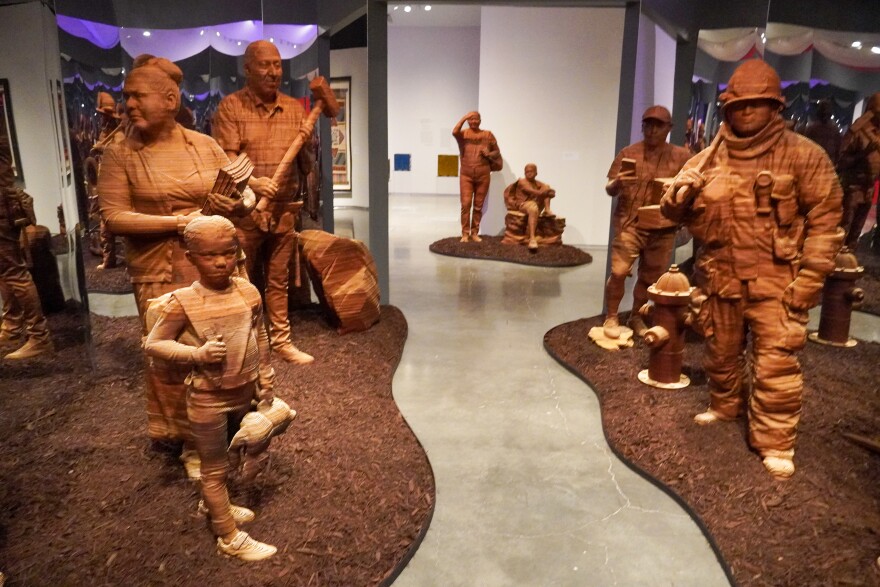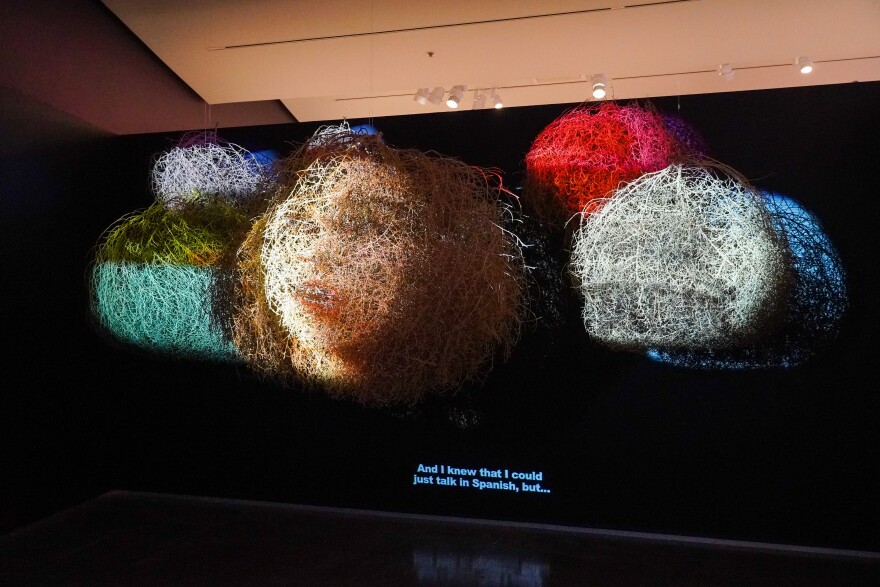On the second floor of the Nevada Museum of Art, the 5,000-square-foot exhibition opens with Bert's new installation, “The Warriors,” a series of 20 life-size sculptures of actual immigrants employed as front-line workers.
“The Warriors,” one of seven installations that make up the exhibition, is a tribute to essential workers who were "invisible" before the pandemic, such as truck drivers, housekeepers and restaurant workers.

Bert thought about essential workers as Chinese Terra-Cotta Warriors, clay soldiers that were buried with China’s first emperor and not discovered until 1974.
“This whole army of warriors was buried for 3,000 years, and they suddenly excavated them and unearthed them. These [frontline workers] are millions of warriors that you have around you and keep the world together,” he said. “You never saw them because you were not needed to pay attention to that, but with the pandemic, that everybody was in their homes working through Zoom, somebody has to deliver the food to you or pick up the crops and do all of these things. And then people start seeing them.”
All of the individuals depicted represent real people with real names — David, Alex, Margarita, Nalleli, Eduardo, Sabrina and others — who stood at the forefront during and after the COVID-19 pandemic.
“They are all people that are usually around me. Margarita comes to do the studio cleaning sometimes and then the firefighters from the local fire station,” he said.
The wooden sculptures follow a complex process. Bert brought each person into the studio and took a three-dimensional scan of their entire body. Next, a special computer program processed the scan to include even the smallest detail. Finally, he cut the wood with laser technology.
The brown lines of the wood represent a harsh desert landscape that resembles the journey of immigration, he said.
“The Warriors” also highlights the invisibility frontline workers face. Surrounding mirrors multiply the number of the life-size sculptures, representing an infinite army of workers that exists within every community.

Bert, who was born and raised in Chile, said his experiences with the Indigenous Mapuche community inspired a series titled “Encoded Textiles,” in which QR codes are handwoven into traditional textile designs.
When scanned with a smartphone, the QR code takes guests into a cinematic world of stories by tribal elders, activists and poets.
This project resulted in collaborations with Mapuche, Navajo, Maya, Mixtec and Zapotec weavers.
This isn’t the first time Bert has worked with the Nevada Museum of Art. In 2017, Bert was part of the museum’s “Unsettled” exhibition.
One of the museum’s ongoing commitments has been to highlight the diversity of the community, said associate director Ann Wolfe.
“With Guillermo Bert’s exhibition in particular, he’s speaking to the immigrant experience and the journey of immigrants to America. That is a really timely issue right now that many different immigrant communities can relate to,” she said.

The “Tumble Dreams” series concludes the journey through Bert’s 15-year career. Through projected interviews, Bert shares the story of immigrants who have crossed the border into the desert’s iconic symbol of movement: the tumbleweed.
“If you think about it, in the desert, the tumbleweeds are being blown away by the air, by the wind, and they’re nomadic. They’re going from one place to another and they have no direction. They’re like the immigrant crossing the border; they’re fully on their own kind of thing and they’re suffering quite a bit. So I thought that this would be a really good medium to express their journey,” he said.
“Guillermo Bert: The Journey” will be on display at the Nevada Museum of Art until February 4, 2024.





